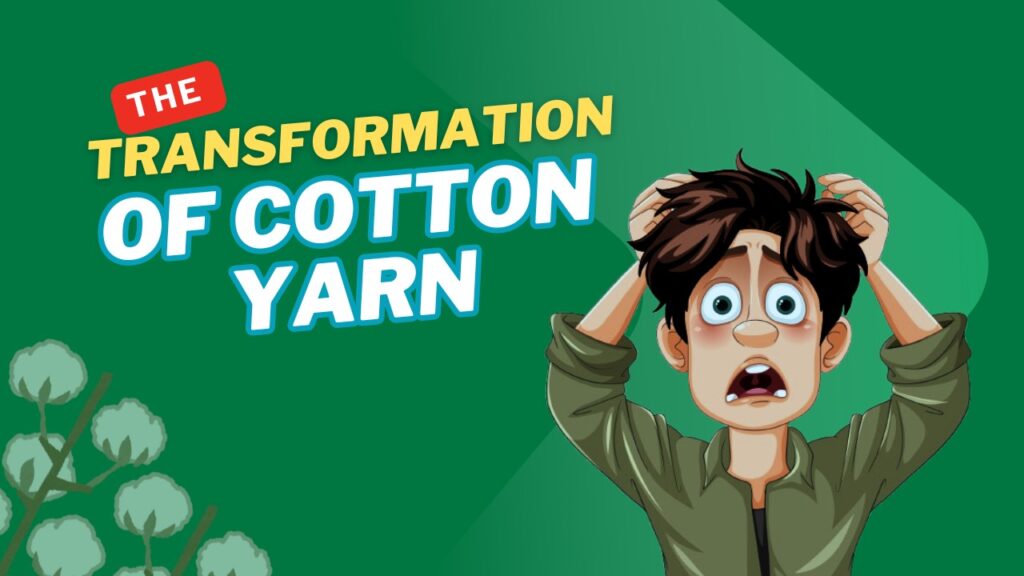Introduction
The cotton industry has undergone significant transformations over the years, driven by technological advancements, sustainability initiatives, and changing consumer demands. In this blog, we will explore the various dimensions of this evolution, highlighting the key changes in the production, processing, and application of cotton thread and yarn
1. Early Methods of Cotton Processing
To begin with, cotton has been cultivated for thousands of years, but the methods of yarn production have drastically evolved. Initially, cotton fibers were hand-spun using simple tools, which made the process labor-intensive and slow
2. The Industrial Revolution's Impact
Furthermore, the Industrial Revolution marked a turning point, introducing mechanized spinning and weaving, which greatly increased efficiency and production capacity. This section will delve into the history of cotton yarn production, illustrating how innovations have paved the way for modern practices
Innovations in Cotton Yarn Processing
1. Modern Spinning Techniques
In addition to historical advancements, the cotton yarn industry has embraced various innovations to improve the quality and sustainability of its products. Modern spinning techniques, such as ring spinning and open-end spinning, have enhanced yarn strength and consistency. Moreover, these advancements have paved the way for the production of high-quality cotton sewing thread, catering to both industrial and consumer needs
2. Sustainable Dyeing and Finishing Processes
Similarly, advancements in dyeing and finishing processes have reduced water and chemical usage, aligning with global sustainability goals. This section will discuss the latest technologies and processes that are transforming cotton yarn production
The Role of Sustainability in Cotton Yarn
1. Rise of Sustainable Cotton Farming
As a result of increasing consumer awareness, the demand for sustainable cotton products has risen significantly. Consequently, the cotton industry is responding with initiatives aimed at reducing its ecological footprint
2. Ethical Sourcing Practices
This transformation includes organic cotton farming, water-efficient irrigation practices, and the adoption of sustainable supply chain practices. Thus, this section will explore how sustainability is reshaping the cotton yarn landscape and the importance of ethical sourcing and production methods
The Impact of Consumer Trends on Cotton Yarn
1. The Influence of Fast Fashion
Moreover, changing consumer preferences are influencing the cotton yarn market. The rise of fast fashion has led to increased demand for affordable, high-quality cotton products
2. Growing Demand for Ethical Production
Furthermore, a growing segment of consumers prioritizes sustainability and ethical production. This section will analyze how these trends are affecting the types of cotton yarn produced, the variety of products available, and the overall direction of the industry
1. Emerging Technologies in Cotton Production
Looking ahead, the cotton yarn industry is poised for further transformation. In particular, emerging technologies, such as biotechnology and nanotechnology, have the potential to revolutionize cotton production and processing
2. Digital Tools for Supply Chain Transparency
In addition, the integration of digital tools for supply chain transparency and consumer engagement is becoming increasingly important. Notably, the emphasis on durable cotton thread for professional garment production is likely to rise as manufacturers seek to create high-quality, resilient products that meet evolving consumer expectations. This focus will not only enhance product longevity but also contribute to more sustainable practices in garment manufacturing
Conclusion
Ultimately, the transformation of cotton yarn reflects a broader narrative of change within the textile industry. From its historical roots to modern innovations, the journey of cotton thread and yarn is one marked by adaptation and resilience. As the industry embraces sustainability and responds to consumer demands, the future of cotton yarn promises to be as dynamic as its past. By understanding these threads of change, stakeholders can better navigate the evolving landscape and contribute to a more sustainable and innovative future in the cotton industry

